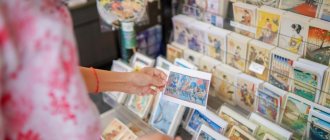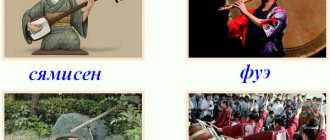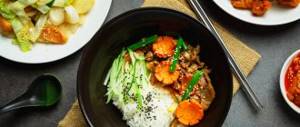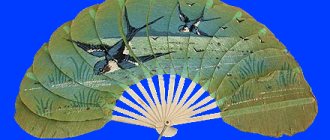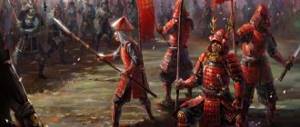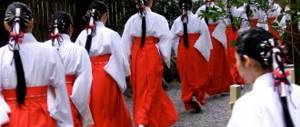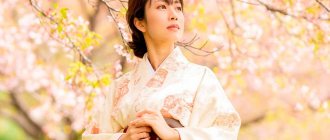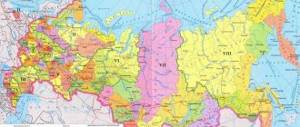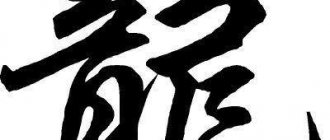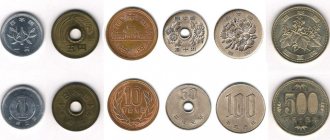Koya-san is an incredible place, with strong positive energy and a unique atmosphere. Everything we did, saw, and tried there made a great impression and definitely became the most unusual experience of our entire trip to Japan!
How to get there Japanese bus Shukubo Saizen-in Tofu lunch Danjo Garan Kongobuji Temple City Eat like a monk Live like a monk
There are places that you have never heard of, never thought about, or even suspected. But when you are lucky enough to visit there, you leave it in your heart forever. For me, this was Koyasan - a sacred city in the snowy mountains of Japan, home to one hundred and seventeen temples and a refuge for people seeking their own path and harmony.
Although we didn’t go there for enlightenment, we found much more than we expected...
Road to Koyasan from Kyoto
The pilgrim's path is never easy. Therefore, to get to Mount Koya from Kyoto, it took more than three hours and several modes of transport : subway, bullet train, express train, cable car, bus, feet!
No matter where you're coming from, head towards Gokurakubashi Station - this is where the cable car to Koyasan Bus Station is located.
From Kyoto Station to Osaka Station, then transfer to Osaka Loop Line to Shin-Imamiya Station . These two trains are covered by the JR Pass.
Shin-Imamiya Express to Gokurakubashi Station is a local train and is not included in the JR Pass . From Shin Imamiya to Koyasan at the station you need to buy a train+funicular ticket , maximum 2200 yen (≈20 USD)/person.
You can check the schedule and cost on this website (Departure - Shin Imamiya, Arrival - Koyasan, play with time, it gives options of different duration and cost).
The landscape outside the train window gradually changed from sunny spring to cloudy winter. The height of Mount Koya is small, only 800 meters , but snow was visible here and there. Bad news for those traveling light without warm clothes (that is, us).
The air temperature in Koyasan may differ by several degrees . We traveled around Japan in mid-March, when the weather was 12-15 degrees Celsius. At the same time, there were snowfalls and 3-4 degrees on Mount Koya. The average temperature by month can be checked here.
It’s good that we didn’t have to wait for the funicular at the station and didn’t have to freeze - it was already greeting guests with open doors. Besides us, about ten people entered the booth and after 5 minutes of getting up they went out to the bus station.
Route to Koya-san
It will be convenient to purchase a Koyasan World Heritage Ticket on the Nankai Railways line. It includes round trip travel.
A serene, quiet place, with fresh air and endless sky - Mount Koyasan. The route to Koya-san should start from Osaka, from Namba Station.
The route consists of a train ride for about an hour and a half, then passengers transfer to the funicular and go up, and the route ends with a bus ride along the serpentine road. Climbing the mountain on foot is prohibited.
Instructions for a Japanese bus
In order not to waste time, I advise you to immediately look for the information window and ask from which platform the nearest bus to Koya-san departs.
In summer and in good weather, you can walk several kilometers along the trail.
They also give you a color map indicating all the temples, cafes and instructions on how to use the bus ! You can download it online here.
- Waiting at the bus stop
- Go through the door in the middle of the bus
- Take your ticket from the machine at the door
- Sit down, prepare money for travel - usually there is a board inside with the names of stops and costs (check the link)
- Press the button before the desired stop for the driver to drop you off
- Go to the front of the bus, to the driver
- Place your ticket in the machine in cash , and exit through the front door.
Everything is very simple when you have the information. But we encountered a Japanese bus for the first time on the way to Jigokudani Park and made everyone laugh by throwing it around the cabin.
Prepare coins and small bills for bus travel. The machine will not be able to give change for 2-10 thousand yen. Drivers don't speak English
Accommodation and rules of Koya-san
Tourists and pilgrims can stay in the city of Koya-San, which has grown around the temples. The place to stay for the night can be called a ryokan, but guests will be staying in the temple, since there are no other buildings in the city. You can book accommodation in advance via the Internet. Koi-san has a couple of small shops and stalls to buy food and souvenirs.
New arrivals will be asked to leave their shoes outside before entering the temple and will be given slippers, a yukata and instructions on how to behave on the premises.
Shukubo Saizen-in
With icy fingers, I tried to deal with the laces of my sneakers on the temple stairs. Slippers, wide open doors, bitter cold, a monk intently writing hieroglyphs on paper...
Did you know that Mount Koya is the center of the Shingon school, one of the main Buddhist sects in Japan ? That is why pilgrims from all over the country come here. there are no regular hotels in Koyasan . If you're planning to stay overnight, get ready for a unique experience under the roof of one of the shukubo . Today, they offer shelter and food to travelers.
The monk at the reception did not respond and continued to conjure a brush with ink. Several minutes passed before a smiling man appeared, found us on the list, made the payment and took us to see the room.
The Saizen-in Temple we booked for the night was founded a thousand years ago . They say that one of the most revered Buddhist monks in Japan, Shinran , lived and meditated in this temple for 100 days in the spring of 1235.
Shukubo is a wonderful opportunity to experience a small part of the life of monks . She, surprisingly, was not deprived of the modern benefits of humanity. The accommodation was paid for by credit card, internet was available on site, and the premises were equipped with TVs, safes, air conditioning and heaters.
Having passed through a labyrinth of wooden creaking corridors to the second floor, we entered a small, bright room with sliding doors and floor-to-ceiling windows. Traditional red bean sweets and hot tea were waiting on the table...
Having thrown our backpacks into a corner, warmed up and put on several layers of clothing, we went to have lunch and explore the surroundings of Koya-san.
Koyasan Okuno-in Shrine
This temple, along with Danjo Garan Temple, is one of the most sacred places in the city of Koyasan. People believe that the famous monk Kukai did not die in this place, but only sat down to rest in eternal meditation.
The pilgrimage begins on the bridge, which is called Ichinohashi. From this place, believers walk about two kilometers towards Gobyo, which is the name of the Kobodaishi mausoleum. Along the way, they will meet monuments to famous warriors of the past: Oda Nobunaga, Toyomi Hideyoshi, Uezuki Kenshin, etc. If you are interested in the Sengoku period (1467-1590), then you will be delighted with this place.
Besides Ichinohashi, there is another bridge, it is called Gobyobashi. This place is sacred, so photography is prohibited here. All visitors must also wear hats. It is even forbidden to take a cane with you, so as not to accidentally damage the oldest Sanskrit inscriptions. Before crossing the bridge, you must bow to Kobodaishi. It is believed that Kukai loved to meditate in Gobyo, which is why his mausoleum is located here.
Nearby you can find many other sacred places and sites that will be interesting to visit. These include a number of Jizo statues, a statue of the Bodhisattva (he protects children, travelers and the souls of the dead), as well as a lantern, the fire of which is believed to have been burning for a thousand years.
There's no such thing as too much tofu
Some sects of Japanese Buddhism are not so strict and monks are allowed to marry, have children, and drink alcohol. There are even a few restaurants in Koyasan that serve beef and chicken. But we decided to go to the interesting cafe Kadohama Gomatofu, where almost all dishes are made from tofu . We ordered a mixed lunch.
Tofu is a product made by curdling soy milk (like regular cheese or cottage cheese). Almost tasteless, but rich in protein and very popular in vegetarian cuisine
The waiter actually brought everyone a whole tray of tofu! Salty, sweet, in sauces... To be honest, as a person who is not used to it, I didn’t like most of the options, but serving and tasting is an interesting process. The most delicious were fried tofu, omelette and with mushrooms. The rest are also fine if you eat rice and miso soup. The tofu banquet with tea cost almost 4 thousand yen (≈37 USD) - the most expensive lunch of the entire trip.
Danjo Garan Temple Complex
According to legend, when the Japanese monk Kukai (Kobo Daishi) returned home from his travels in China, he could not figure out where to create a school of Buddhism and share his knowledge.
Relying on providence, Kukai threw a ceremonial vajra (small trident) into the sky and decided to build a temple where it would land.
Oddly enough, this place turned out to be a pine tree at the top of the mountain. Here, in 816 , Kobo Daishi founded Koya-san , and the tree is still alive and fenced in at Danjo Garan.
In Kyoto, we spent several days exploring the local temples, but we were still amazed by what we saw at Danjo Garan.
This temple complex was the first on Mount Koya . Not counting the sacred pine tree, there are about 25 towers, halls and other religious sites on the territory . Pilgrims even have a special order in which they need to be examined and paid tribute.
We tried to follow the instructions as best we could. But even such beauty and splendor could not save us from the cold... They ran to Kongobuji Temple - nearby - with all their numb legs.
About Kukai and Koya-san
During the Heian era, in the 8th century AD, there lived the philosopher and founder of the Shingon Buddhist movement - Kukai. While still a young man, he decided to become a monk and set out on the path of knowledge. When Kukai was 21, he was ordained and 10 years later he went to study in China. Kukai studied diligently and became a recognized calligrapher.
Kukai’s main goal was to create a temple in his country. While still in training, he asked the gods: “What place in his native country would be suitable for a temple?” Kukai threw the vajra into the sky and it was whirled by the wind and carried to a mountain in Japan called Koya-san.
Two years later he returned to Japan and was appointed by the emperor to the post of rector of the central temple. Kukai did not forget his dream and one day he set out to look for an ideal place, secluded and quiet.
He passed through many cities and villages, and in Uji he met a hunter - a tall man, with a bow and arrows on his back, and with him were two dogs. One has white fur, the other has black fur. Kukai told the hunter about the purpose of his journey, and the interlocutor replied that he knew that very quiet and secluded place. The man gave Kukai guides to the place and Kukai's dogs led him to the mountains of Wakayama.
Approaching the foot, they met an old woman and she told that she was the mother of a tall hunter and would show the right path to a secluded and quiet place. And Kukai climbed to the top of Koya-san along the indicated path, and saw a cedar, and in the crown of the cedar his vaja. And he realized how quiet and secluded the place where he had come was and how there would be a temple here, not just one, but a thousand.
Kongobuji Temple
Interestingly, the name "Kongobuji" (Vajra Peak) was originally used to refer to the entire Mount Koya. Today this is the name given to the main temple of Koyasan and the headquarters of Shingon Buddhism.
The original temple was built in 1593, rebuilt in 1863. And in 1869 it was combined with another one and renamed Kongobuji. Only the main gate remains from 1593
Having taken off our shoes and paid the entrance fee (500 Yen/person ≈ 5 USD), we found ourselves in the long corridors of the temple. Along them you can see beautiful painted panels, sliding doors of rooms where tatami people are not allowed to trample.
Kongobuji Rock Garden is considered the largest in Japan . Two dragons floating from the sea to the clouds are created from 140 granite stones. Only the enlightened can recognize the sacred guards. But even tourists as cold and far from Buddhism as I am can appreciate the scale, comfort and harmony of this place.
As for Zhenya, his favorite part of the excursion was the large meditation hall, where they served hot tea and cookies.
City tour
Unfortunately, we didn’t have time to Okunoin cemetery But even without him, the impressions from Mount Koya remained the most incredible!
Before dinner, we decided to walk along the main street of the city , not far from the Shukubo temple.
Since 2004, Koyasan has been on the UNESCO World Heritage List.
Apart from the snow, temples and lush pine groves, it’s quite a typical Japanese town. We met monks only once during the whole day.
There were also few tourists . Although they say that in recent years they have increased not even tens, but hundreds of times! But compared to Kyoto, Mount Koya is quiet and peaceful. But the number of beautiful ancient temples per square kilometer is simply off the charts!
We looked into several souvenir shops that sold everything from rosary beads to sparkling water and snacks. It was not possible to find the delicious sweets that we were treated to in the morning at our temple-hotel.
We froze completely and returned back to Shukubo in the evening.
Attractions Koyasan
When I started looking for information about the city of Koyasan on Wikipedia, I found nothing except a mention of Mount Koyasan.
At the same time, on some sites the name “Koyasan” is used as a city. As a result, after a lengthy search, it was possible to establish that Koyasan is a small religious settlement or a mountain town-religion, whichever is more convenient for you. A little history. The religious center of the Buddhist sect “Shingon” was founded at the beginning of the ninth century on Koya-san by one of the most famous Japanese monks, his name was Kukai (or Kobodaishi). Since then, Mount Koyasan, together with Mount Hieizan (Kyoto city), has been considered one of the most revered holy mountains of the Land of the Rising Sun.
In general, Koya-san is not one mountain, but a mountain range. The religious center is located on the main mountain Koyasan, which is surrounded by eight other peaks. The plateau extends 3 kilometers from north to south, and 5 kilometers from east to west. This square managed to accommodate 117 temple complexes. By the way, pilgrims stop overnight in most temples.
Eat like a monk
While I was trying for the tenth time to tie my yukata (homemade kimono, which is given out at shukubo) tighter, there was a knock...
One of the most pleasant and interesting events of the day began - a traditional dinner, included in the price of the stay. Two young monks carefully placed the food on the tatami, bowed and silently disappeared behind the door before we even had time to open our mouths.
Now let me explain my excitement about dinner.
Japanese vegetarian temple cuisine is called shojin-ryori and is part of the spiritual practices of monks. That is, it is prepared according to special rules, combining delicate taste, health benefits and aesthetic beauty.
In most Buddhist traditions, the number five is of great significance. Therefore, shojin-ryori usually has five or more dishes. They also try to balance the five colors, five aromas, five cooking methods and five elements.
Small cups with fresh and pickled vegetables. A bowl of rich miso soup. Tempura made from the most tender pumpkin, lotus root and unknown crispy leaves. Rice, tofu (which is a day's worth), juicy oranges. A pot of mushroom udon heated by a candle. And something else, unimaginably tasty and beautiful.
In general, the whole set was something incredibly tasty and beautiful (even the tofu)! Each dish is in perfect harmony with each other...
Sitting on the tatami in yukata, wielding chopsticks and smacking contentedly, we felt almost like real Japanese. There were only a few details left before total immersion...
Live like a monk
First of all, slippers! Shukubo rooms do not have separate toilets; you need to use a shared one on the floor. very important before entering to change the corridor slippers for the toilet slippers, which are prepared at the door.
Secondly, the onsen! Shukubo rooms do not have a shower. Our temple had an onsen - a hot spring bath - very cool! Before diving, be sure to wash yourself in the mini-shower nearby, on a stool.
People with tattoos are not allowed to enter onsens, swimming pools and traditional inns in Japan . This is due to the fact that in the country since ancient times, criminals have been marked with tattoos. Today in modern Tokyo and Kyoto there is not so much emphasis on this, but in small traditional cities everything is still strict
By the way, I had to buy a large towel separately from the monk (100 Yen/piece ≈ 1 USD). The set includes Shubuko for the face only.
Thirdly, futons! Monks and many Japanese sleep on the floor , on small mattresses - futons . After dinner, we were changed from tables with dishes to sleeping futons with pillows and blankets. Soft, warm, comfortable - we slept like babies!
And finally, morning prayer. Every day, monks perform prayer rituals in the temples, and tourists are also allowed to attend.
At 6:15 am, alarm clocks rang all over the floor. Sleepy and shaggy, everyone hurried to the ceremony in the prayer hall. How cold it was there! In a jacket and woolen socks, I was shaking like a leaf. But no one moved until the end of the ritual (about 30 minutes), some repeated the ritual after the monk. There was a pleasant smell of incense, we fell into a trance and began to sway to the rhythm of prayer.
The golden hall, the beautiful statue of Buddha, the flower decorations, the monk’s clothes, his voice and even the cold - everything seemed so whole and meaningful...
LiveInternetLiveInternet
-Music
-News
–Applications
- Postcards
Reborn catalog of postcards for all occasions - Cheap flights
Favorable prices, easy search, no commission, 24 hours. Book now - pay later! - always no analogues at hand
^_^ Allows you to insert a panel with an arbitrary Html code into your profile. You can place banners, counters, etc. there - TV Guide
Convenient weekly TV guide provided by Akado TV Guide. - I am a photographer
Plugin for publishing photos in the user's diary. Minimum system requirements: Internet Explorer 6, Fire Fox 1.5, Opera 9.5, Safari 3.1.1 with JavaScript enabled. Maybe it will work
–Tags
–Links
–Photo album
-Always at hand
–Categories
- WORKS OF FAMOUS ARTISTS (3512)
- Still lifes (803)
- FRIENDS' DIARIES (1345)
- NEW IN FASHION. (86)
- SPORT (30)
- Amazing people (9)
- ALL ABOUT PLASTIC WINDOWS (7)
- WILDLIFE (898)
- LAKES AND RIVERS (188)
- Pools and Mountains and much more (81)
- TAIGA TRAILS! (76)
- WATERFALLS (55)
- SEASONS . (52)
- FLORA AND FAUNA ! (47)
- Volcanoes and other natural phenomena (44)
- Oceans and Seas. (27)
- Unlikely insects (15)
- SPIDERS AND MUCH MORE! (eleven)
- Honey plants: sainfoin! (10)
- Good morning Country . (8)
- MUSHROOMS, NUTS AND MUCH MORE! (7)
- NUTS AND THEIR BENEFITS (4)
- Good morning Country . (4)
- Stones that should not be picked up (2)
- Arctic (1)
- VARIETIES OF MUSHROOMS! (1)
- PARKS, SQUARES AND GARDENS (850)
- Monuments and sculptures (206)
- Rural spaces! (57)
- Rural spaces! (39)
- ZOOS (22)
- STATION SQUARE (7)
- Cinemas online (772)
- TV – online (10)
- CINEMA PANORAMA (2)
- ART ! (740)
- performances (220)
- PORCELAIN AND MANY OTHER PRODUCTS! (93)
- POETS AND WRITERS (92)
- People's talents! (38)
- JEWELRY WORKS (27)
- Puppeteers makers! (5)
- Gallery (3)
- ELEGANT DECOUPAGE BOTTLES AND JARS. (3)
- Circus and theaters (2)
- DOCUMENTARIES (666)
- NO ONE IS FORGOTTEN! AND NOTHING IS FORGOTTEN (201)
- ARMY DAYS! (80)
- MYSTICAL STORIES (20)
- Predictions (8)
- CASTLES, VILLAS PALACES AND MUCH MORE (648)
- Caves and much more. (82)
- HOTELS AND HOTELS. (26)
- TOWERS (20)
- RELIGION (642)
- MAGIC! (65)
- Meditation “Transition to a New State of Being” (37)
- PSALMS (2)
- Day of an Angel by name (1)
- MUSEUMS (442)
- ESTATES (99)
- Bridges (61)
- Beautiful precious crystals and stones (20)
- Theater buildings are architectural monuments. (18)
- FOUNTAINS (17)
- Weapons (2)
- AWARDS, ORDERS, MEDALS. (1)
- PHOTOS OF MY FRIENDS (398)
- LIBRARIES (358)
- Legends, were, fairy tales, wisdom. (256)
- Fables (72)
- EVERYTHING FOR SUMMER RESIDENTS (337)
- CULINARY FERMENTS (320)
- Products that are healthy and harmful for the intestines (127)
- SEAFOOD (12)
- PROFESSIONS (1)
- Around the World (254)
- WORLD OF BIRDS (234)
- RESERVES (41)
- BEEKEEPING AND BEES (1)
- ICONS (227)
- MEMORY (20)
- Dream Interpretation (7)
- Dream Interpretation (3)
- PSYCHOLOGY (223)
- Philosophy of life (60)
- THOUGHTS (46)
- Esoterics (39)
- Ayurveda (13)
- Aphorisms (3)
- Telepathy (1)
- GENETICS. (1)
- RESORTS AND SANOTORIA (223)
- ISLANDS (126)
- ISLANDS (61)
- BEACHES (17)
- Bays, terminals, marinas. (5)
- Around the World (216)
- Jewelry (185)
- JEWELRY (37)
- STENCIL (185)
- Cars, motorcycles and other equipment (184)
- EVERYTHING FOR CHILDREN (129)
- OUR CHILDHOOD (16)
- Longevity (127)
- MEDICINAL PLANTS. THEIR BENEFITS. (117)
- BOONY (1)
- DIABETES (127)
- FOOD. (72)
- MEDICINE AND DRUGS!! (28)
- ART PICTURES (121)
- CITIES - HEROES (97)
- SQUARE (13)
- SPIRITS (90)
- Ancient civilizations (89)
- Times and eras (25)
- AUDIO TALES (84)
- Riddles, proverbs and much more! (7)
- HISTORY - of all centuries. (76)
- POLITICS AND PUTIN (26)
- HOROSCOPE! (9)
- CALENDARS (75)
- DAYS OF THE WEEK (16)
- The most interesting on youtube (67)
- DANCING (58)
- EVERYTHING FOR DIARIES (53)
- THEATERS (42)
- Markets, fairs, bazaars. (6)
- CULTURE (1)
- BACKGROUND (39)
- RESORTS, SANATORIUMS (37)
- HOTELS AND HOTELS. (15)
- Lighthouses. (4)
- ENGLISH LANGUAGE (16)
- FAMOUS AND GREAT MUSICIANS (14)
- ROMANCES (12)
- Rare and beautiful stones (11)
- CEMETERY OTHER BURIALS (7)
- SPORT (3)
- WEATHER FORECAST (3)
- COINS, CURRENCY. RUBLES. (2)
- AVATORKS (2)
- shocking hypotheses (1)
- Comedians' Shelter. Luck . (1)
- amazing plants (1)
- Palmistry. (1)
- Online store (1)
- Oceanarium and aquariums (1)
- FANTASTIC (1)
- VIDEO MOVIES. (28957)
- MUSIC (7700)
- EVERYTHING FOR FRIENDS (1218)
- LIFE STORIES (128)
- cinematography (98)
- Radio wave (38)
- CINEMA MAGAZINE WICK. (2)
- BLUE LIGHT (1)
- POEMS (16491)
- VARIOUS TIPS. (7016)
- FOR THE SOUL. (705)
- Folk signs (101)
- Milk and dairy products! (27)
- ALL ABOUT PENSION (15)
- BEAUTY (9)
- STUDYING (3)
- FISHING AND HUNTING. (2)
- Dishwashing detergent - how to choose an effective one (1)
- Beauty fashion! (1)
- INTERESTING LINKS. (1230)
- MENU (13)
- WORLD OF INTERESTS (1307)
- DIARY DESIGN (43)
- HUNTING AND FISHING (35)
- SCHEMES FOR A DIARY. (1842)
- PERSONAL CARE. (727)
- FLASH DRIVES, GAMES (299)
- Recipes DRINKS. CAKES. CUPCAKES. PIES. ROLLS (48264)
- COLLAGES (5747)
- BOOKS (2920)
- USEFUL LESSONS. (2227)
- JOURNEY. (2013)
- ANIMAL WORLD. (1752)
- BEAUTIFUL - PHOTO (1494)
- HEALTH+BEAUTY (1438)
- RECIPES. (1425)
- HOLIDAYS AND CONGRATULATIONS (1424)
- PARABLES (1264)
- Myths and legends of the peoples of the world + stories about law (1062)
- POSTCARDS. (903)
- USEFUL PROGRAMS! (741)
- ACTORS AND SINGERS (613)
- VARIETIES OF FLOWERS. (584)
- BERRIES AND FRUITS (496)
- CARTOON WALKING (490)
- PLAYCASTS (489)
- PHOTO -YANDEX (428)
- THIS IS IMPORTANT (393)
- PRAYERS (317)
- EPIGRAPHES (309)
- BEAUTIFUL SCENES (281)
- HUMOR (239)
- ANIMASHES. (235)
- EVERYTHING FOR THE GARDENER (224)
- JOKES (195)
- INTERESTING SITES (194)
- HANDCRAFTS (158)
- EVERYTHING FOR GARDENERS. (134)
- UNDERWATER WORLD (126)
- VARIETY OF HONEY AND ITS BENEFITS! (103)
- CLIPARTS (98)
- ALL ABOUT COFFEE AND COCOA AND TEA. (97)
- WALLPAPERS (92)
- OUR VEGETABLES (87)
- VIDEO - FRAMEWORK (85)
- COMMENTS (82)
- PLAYERS. (72)
- FAMOUS AND GREAT PEOPLE! (69)
- Herbs and flowers instead of tea and coffee (61)
- BEAUTIFUL WATCH! (58)
- WALLPAPERS (42)
- MUSHROOMS AND BERRY PICKERS (39)
- INFORMER (35)
- CAREFULLY ! BEWARE! DANGEROUS ! (34)
- SEPARATORS (20)
- LETTERINGS (20)
- BUTTONS -NEXT (15)
- Restaurants, cafeterias, canteens and much more (7)
- INTERESTING TESTS! (5)
- WORLD NEWS. (474)
- FRAMES. (12370)
- AMAZING THINGS (203)

